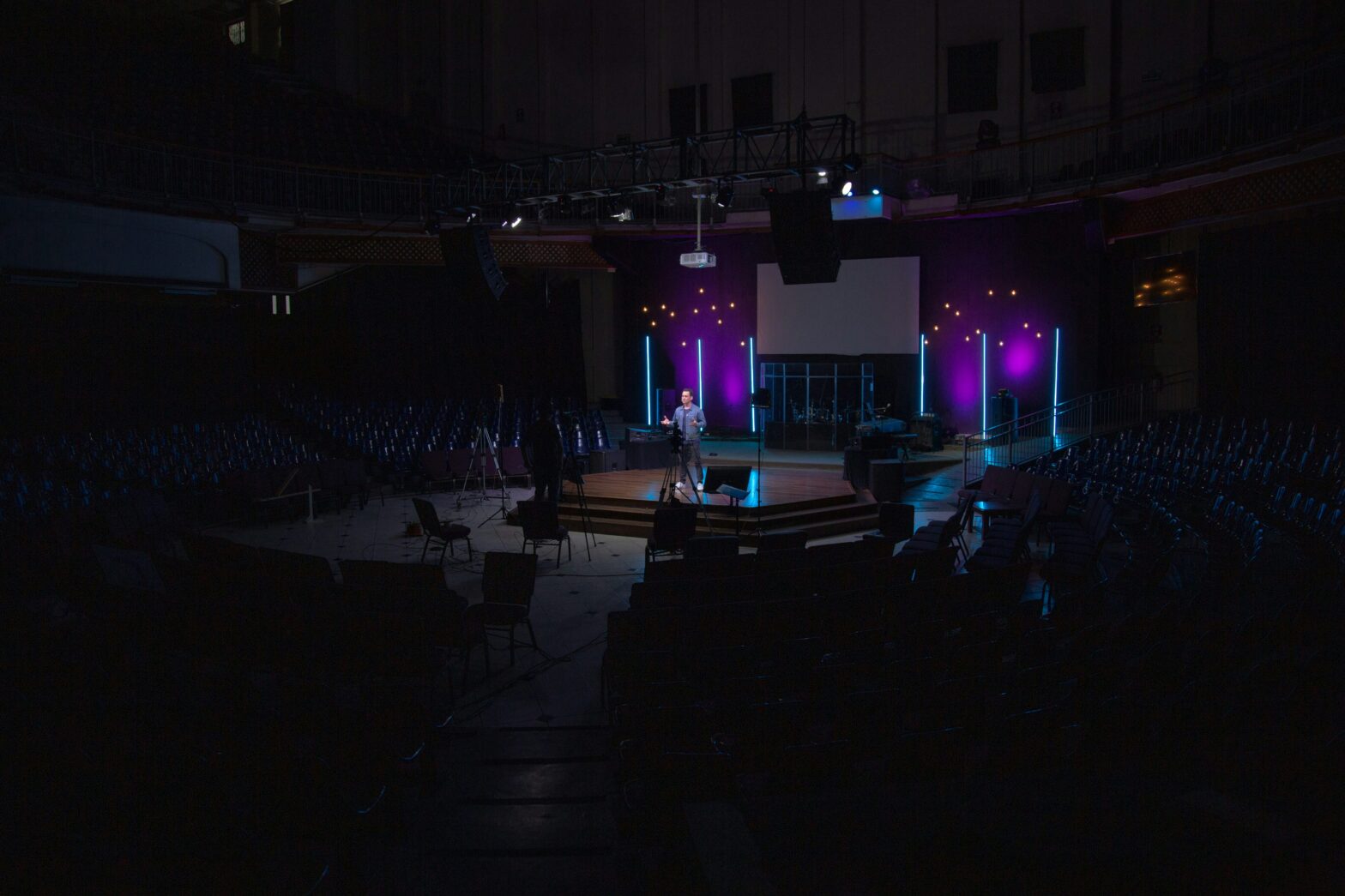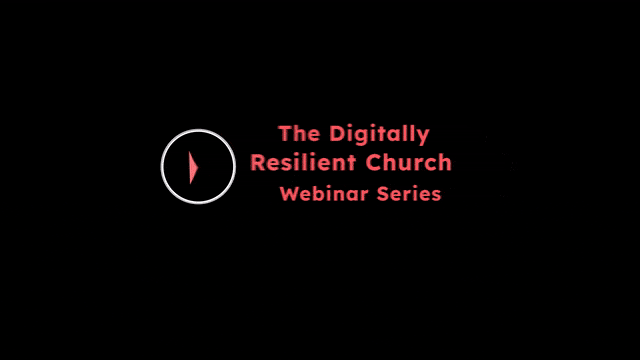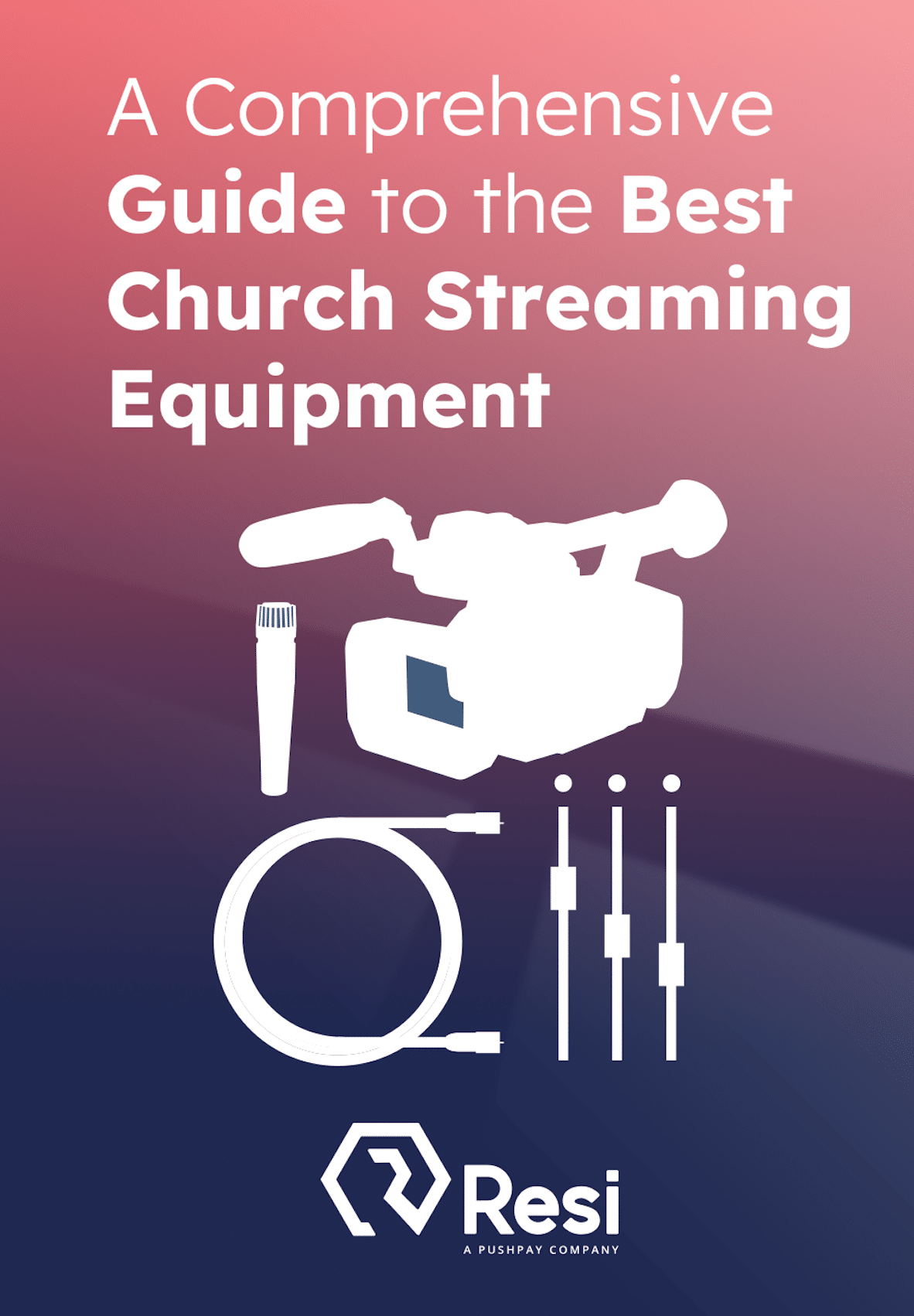
Picture this: it’s Sunday morning. Your service is about to start. Viewers are tuning in from all over, maybe from their couch with a cup of coffee or during a break at work. And just as worship begins, the stream cuts out.
Frustrating, right?
But it’s not just frustrating. A live stream fail like that doesn’t just interrupt a moment—it disrupts connection. And when it keeps happening, it chips away at trust.
In this blog, we’ll look at how a streaming failure can do more damage than you might think, what typically causes it, and what you can do to avoid the headache next time.
The hidden cost of a failed live stream
Most people think of video streaming issues as temporary. A glitch. A hiccup. But for your viewers, especially first-time guests or people checking out your church or ministry for the first time, it leaves a lasting impression.
In a world where digital properties like live streaming have become the new front door for churches, nonprofits, and creators, the cost of a bad stream goes far beyond a few minutes of buffering.
If you’re trying to reach people outside your physical walls, you can’t afford to ignore the risks of a streaming issue.
What causes most streaming failures?
Let’s name the culprits. The most common causes of a streaming failure include:
- An unreliable internet connection or outdated router
- Low upload speeds and unpredictable network conditions
- Device compatibility issues, especially on Apple TV, Facebook Live, or lower-end streaming devices
- Poor streaming platform performance or misconfigured playback settings
- Trying to do too much at once without proper encoding or backup
It’s rarely just one issue. It’s often a combination of technical missteps and overlooked details.
That’s why it helps to have a streaming service designed to handle drops in connection or bandwidth—like Resi’s Resilient Streaming Protocol.
The downstream effects of poor streaming performance
It doesn’t end with one failed video stream.
When your streaming platform lets you down, you could lose viewers permanently. Social media frustration can spread fast. People move on, especially when they expect seamless video content delivery like what they get from cable television or Netflix.
Let’s be honest—people are used to original content and TV shows that work. If your live stream doesn’t measure up, they won’t always stick around.
Inconsistent streaming leads to:
- Loss of credibility
- Fewer repeat viewers
- Negative impact on your reputation
Even worse, your own staff and volunteers may start to feel like all their effort is being wasted. That sense of discouragement can be just as damaging as any technical failure.
Why investing in streaming is a ministry strategy (not just a tech upgrade)
Here’s the truth: The best organizations invest in streaming not because it’s trendy, but because it’s essential.
Reliable streaming platforms give your team peace of mind and allow you to focus on what matters most: Engaging people with the Gospel.
It doesn’t have to be complicated. It just has to work.
With Resi’s platform, you can:
- Broadcast to multiple destinations without the fear of a streaming error
- Get real-time support and analytics for video playback and viewer behavior
- Deliver high-quality video streaming even in unstable network conditions
Whether you’re sharing a sermon, hosting a conference, or creating weekly devotionals as a content creator, your streaming service should lift the burden, not add more stress.
How to protect your next live stream
You don’t need a tech team of ten. You just need the right setup and a reliable streaming provider.
Here are a few ways to protect your next live stream:
- Test your device and connection ahead of time
- Run your stream through multiple platforms
- Monitor buffering or latency issues in rehearsal mode
- Consider hardwiring your streaming device whenever possible
These steps will help you deliver smooth playback, no matter where your viewers are tuning in from.
FAQ
What are the most common causes of live streaming failures?
Most live stream fails are caused by poor internet connection, unstable network conditions, device compatibility problems, or limitations of the streaming platform being used.
How can I fix buffering during a live stream?
Reduce background internet usage, switch to a wired connection, lower your bitrate, and use a streaming service like Resi that auto-adjusts to network changes.
Why is video playback choppy on my streaming device?
It may be an outdated streaming device, poor Wi-Fi signal, or your router not handling demand well. Testing in advance helps identify weak spots.
Why should my organization invest in streaming?
Because it builds trust. People expect professional, uninterrupted video streaming experiences. Investing in reliable tools protects your message from being overshadowed by tech hiccups.
Want a stream that won’t let you down?
Learn how Resi helps prevent streaming failures and gives you the peace of mind to focus on your message, not the tech.







